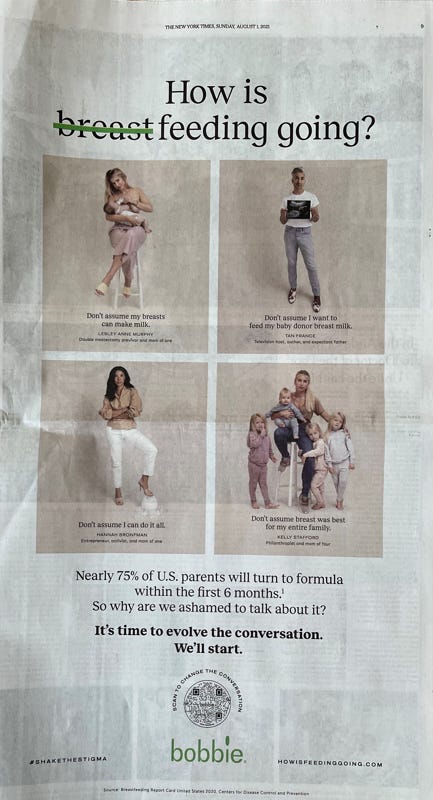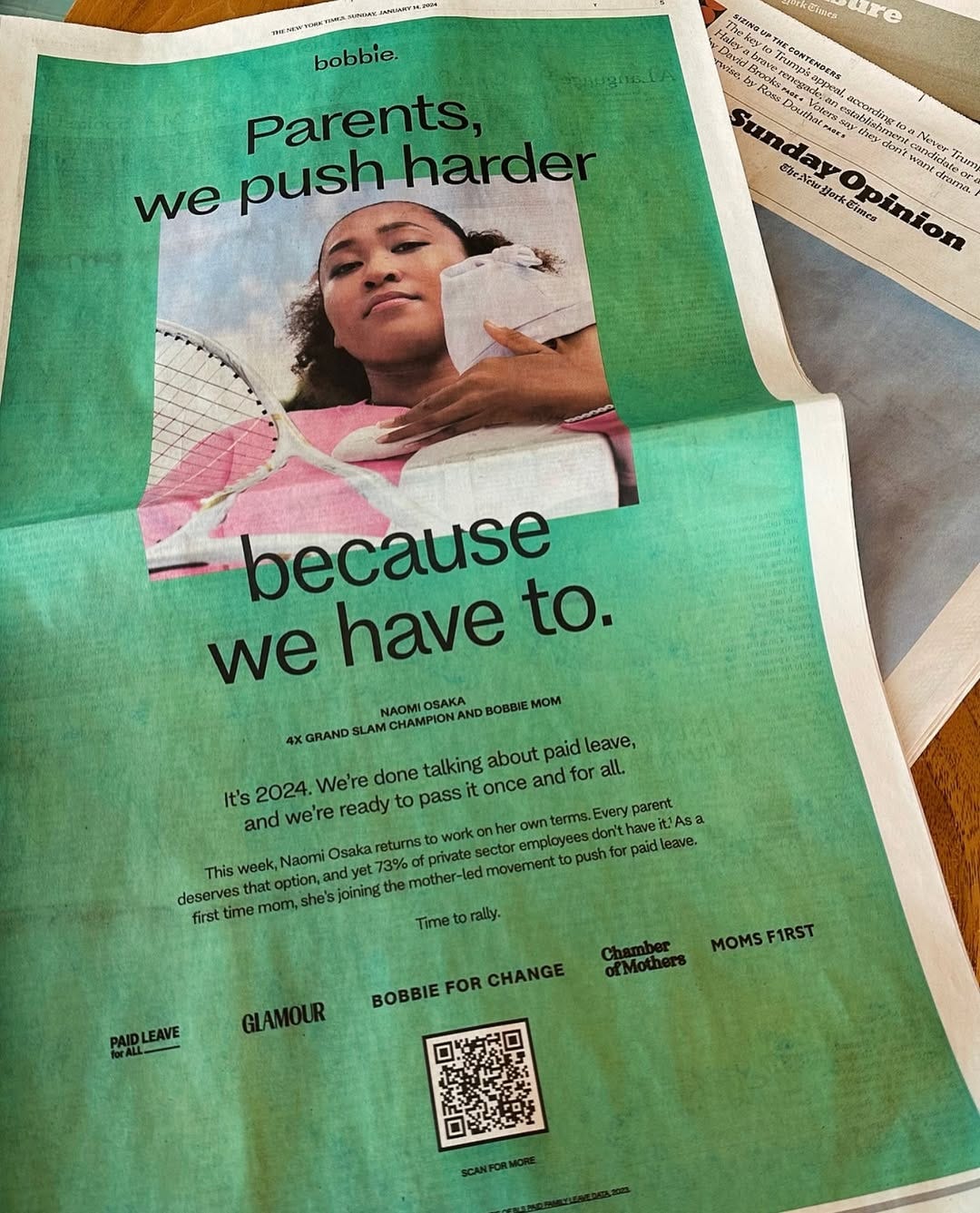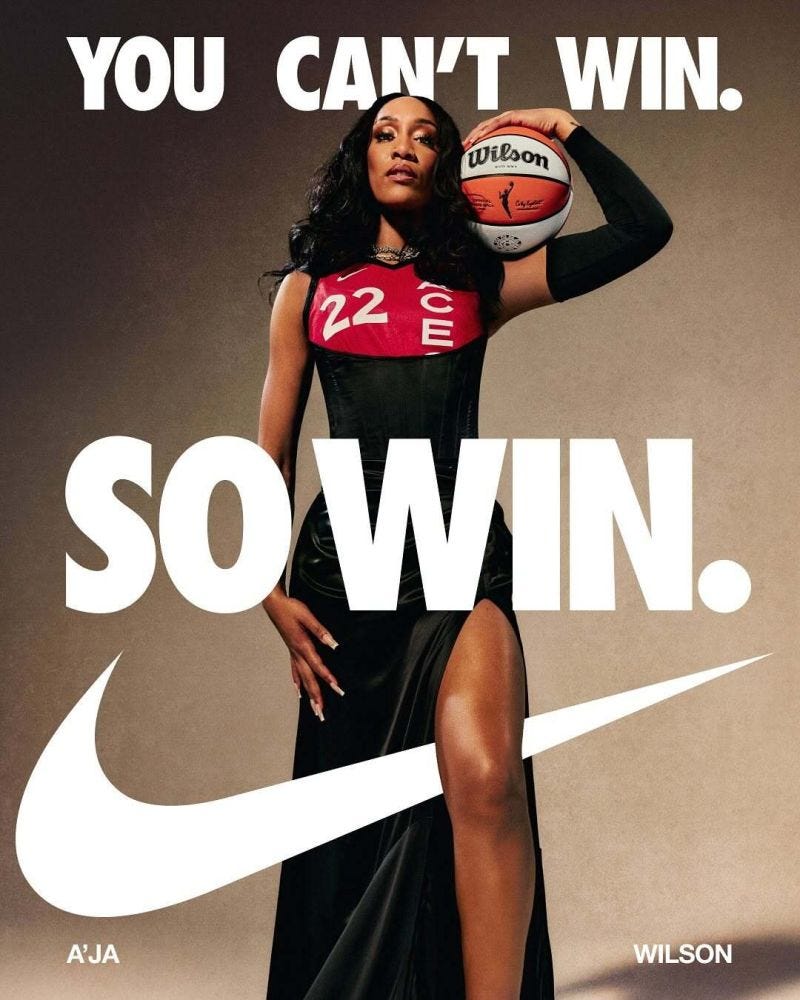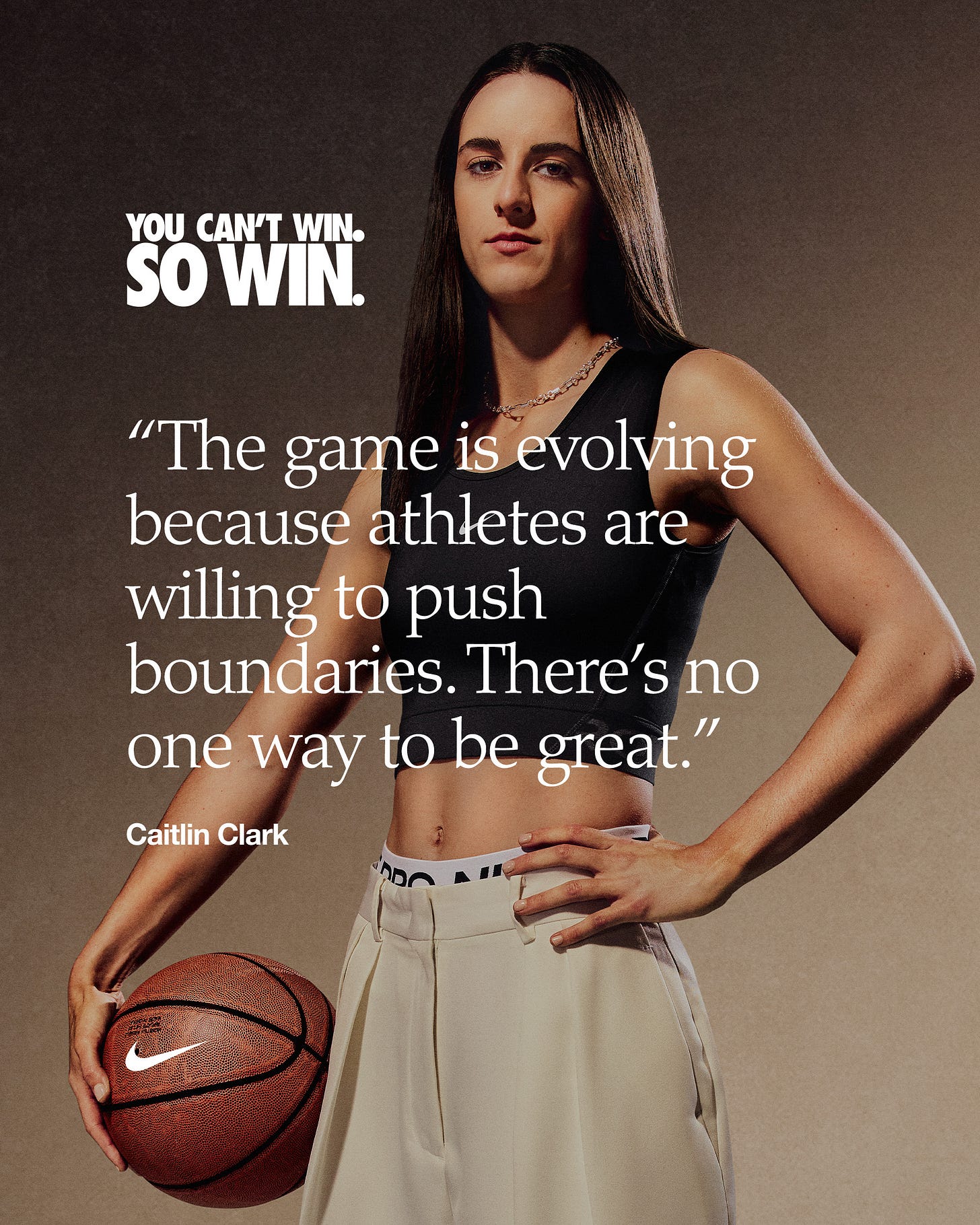📎 How to Define Your Brand Voice (& Template)
Stop describing your brand as "friendly"
We’re back with another Notion template today, plus some other goodies for you: Between eating a huge amount of popcorn during Mickey 17 (Bong Joon Ho’s very original latest) and jamming to the ✨ uncut ✨ version of the S3 White Lotus theme song, I had the pleasure of guest posting on : “It’s not brand vs. growth.” Building on one of my most popular posts, The Brand vs. Growth Myth, this is one is a deep dive into exactly how brand influences every traditional growth metric. Take a read, and let me know if you want to see more from me like this! 🗞️
Btw, enrollment is open for the next live cohort of my 4-week Maven course, Brand for Growth-Stage Leaders, kicking off April 21. Drop me a note if you’re thinking about joining or want to talk through whatever you’re facing at work right now, and I can help you figure out if it’s a fit.
You’re here because you recently subscribed or signed up for one of my resources—my course waitlist on Maven, lightning lesson, or Notion templates.
If someone sent you this post and you’re not subscribed, join those people learning how to tactically advocate for brand at your company. 📬
Over the years, I’ve noticed a pattern: whenever I work with founders or marketing teams on brand strategy, we inevitably get stuck on brand attributes—the words that define your brand voice.
Or maybe you call them your brand personality traits, brand descriptors, brand expression, tone-of-voice characteristics, even brand values. Whatever you call them, aligning on these attributes is probably one of the hardest parts of creating (let alone aligning on) a branding strategy… if you go in without a plan.
Someone throws out “friendly” or “innovative” and suddenly we’re drowning in generic descriptors that could apply to literally any company. Everyone nods along, but deep down, everyone knows these words aren’t doing much work.
That’s why I developed this approach. Like everything I share to de-bunk the “mystery” of brand work, it’s a more systematic way to first develop the dimensions behind your brand voice, and then figure out what emotions you’re trying to inspire among your audience. You need this intentionality to push past initial clichés to uncover what really makes your brand distinctive.
Killing the “brand as a person” stereotype
Let’s just all agree to kill the “If your brand were a person, who would they be?” prompt (don’t even bring up the “if your brand were a car…” one). These exercises are common, but they usually wind up giving you a superficial lists of words that aren’t really rooted in strategy, and they’re hard to translate to what your team should do in real life.
When developing brand attributes, you’re deciding how your brand should express itself to resonate with and speak to your audience’s needs and aspirations. This is central to brand-market fit, which I’ve defined previously as the degree to which a company’s identity, values, and overall customer experience resonate with and meet the emotional and aspirational needs of its target market. That’s because a brand (what do we mean by brand, anyway?) is not a collection of adjectives and personality traits—it’s a comprehensive system for creating emotional connections with your target audience.
So instead of imagining your brand as a fictional character, focus on the emotional impact you want to create through your communications and all the experiences someone has with your product. This is how we get to what will differentiate your brand in meaningful ways.
Brand attributes aren’t product benefits
Brand attributes specifically address the emotional impact that you want people to associate with your brand.
This is important: Emotional benefits differ from product benefits or product attributes.
Let’s be basic for a second and take Nike as an example. Nike’s brand attributes focus on being mentally and physically empowering to dedicated athletes and moving its respective cultural and industry conversations forward. Its product attributes, meanwhile, emphasize durability, style, and technical features—these are not emotional benefits.
When developing brand attributes, watch out for the temptation to choose words that describe how you want the product to seem (innovative, powerful, easy to use). Eventually, you’ll focus instead on how your brand comes across, in most product or marketing contexts:
Is the voice cool and confident, or warm and nurturing?
Is it serious and authoritative, or casual and colloquial?
Is it intense and focused, or laid-back and approachable?
Does it sound like a Millennial, Gen Z, or a Baby Boomer? Does it transcend generations?
When you get to this point, you’re getting down to which words you actually choose and, more importantly, why those specific words. But jumping right to this part can leave you with a list of adjectives and an endless debate of what “bold” or “fun” means. Instead, let’s break down a more structured approach.
A strategic-to-tactical approach
What we’re ultimately trying to do through this exercise is:
Move beyond surface-level descriptors to focus on genuine differentiation
Build alignment across stakeholders on our brand’s personality
Write actionable definitions that help us live the personality, not just define it
The most effective brand development follows a clear progression from strategic positioning to tactical expression. This template guides you through that process.
First, define the strategic foundations for your brand voice by starting with the dimensions that are part of every brand voice, positioning yourself on key spectrums like formality, knowledgeability, and overall outlook. Most brands struggle because they skip this and jump straight to descriptors (“delightful,” “calm,” “assertive”).
Calibrating on these voice dimensions establishes your fundamental brand tone and strategic approach. You’re forced to answer the big-picture questions first: How formal are we? How technical? How emotional?
Once these guardrails are in place, you’ll move to the emotion strength matrix, which helps you add nuance and specificity to that foundation. Here, think about both how you want to sound and how you want your audience to feel.
Want your audience to feel motivated? Then your voice needs to be motivating. Want them to feel assured? Take an assertive approach. Want to draw out their energy and passion? You better sound passionate yourself.
Once you know, for example, that your brand is “moderately formal and strongly academic,” this matrix helps you dial in on specific words and tones that express that positioning—like choosing between “attentive” vs. “obsessed” for your level of “caring,” which makes these choices more meaningful and consistent. You can still pick whatever word or adjective best fits your brand’s unique expression (don’t let my matrix limit you), but now you know the intention behind the choice and it’s easier to interpret and apply consistently.
The logical progression from strategic positioning to tactical expression helps keep brand teams (and their many stakeholders) from getting lost in word choices before establishing their core voice-and-tone strategy. It’s the difference between building a coherent brand identity and simply collecting adjectives (fun, but not very useful 😀).
The goal isn’t to have the “perfect” set of brand attributes on paper. It’s to create a foundation of internal alignment that guides how you show up consistently across every touchpoint. When done right, your brand attributes should feel like an extension of your strategic positioning—not arbitrary choices, but deliberate expressions of who you are and what you stand for in your market.
The Brand Attributes Builder template
The template I’m sharing takes a structured approach through all the major steps that help you define those attributes and then put them in context:
Explore internal philosophies – Ground your attributes in the beliefs and values of key stakeholders to ensure authenticity
Define attributes with meaning – Create clear definitions that explain why each attribute matters to your business and how it benefits customers
Bring attributes to life with examples – Develop concrete “dos” and “don’ts” that show how these attributes manifest in real interactions
Place your brand in context – Compare your attributes against competitors to make sure they’re helping you differentiate (the 📎 The Brand Differentiator 2×2 is handy here)
The template includes:
Complete step-by-step framework
AI prompts for brainstorming
Examples of early attributes and definitions from Brex and Gusto
“Do” and “Don’t” examples
How to get access:
💌 For paid subscribers
Scroll to the “Open Template” button below to copy directly to your Notion workspace
Monthly subscribers get access to any paid templates I’ve shared on Substack
Annual subscribers can access any templates I’ve shared—DM me if there’s a template you want now that I haven’t shared on Substack
🛒 For everyone else
Find this template (and others) on the Notion Marketplace
Purchase individually or expense through your company
Check out my free templates for an idea of what’s included
If you liked what you read, consider:
saying hi or dropping a question in the comments!
connecting with me on LinkedIn: 👩🏼💻 Kira Klaas
sending to a friend 💌 or coworker 💬









